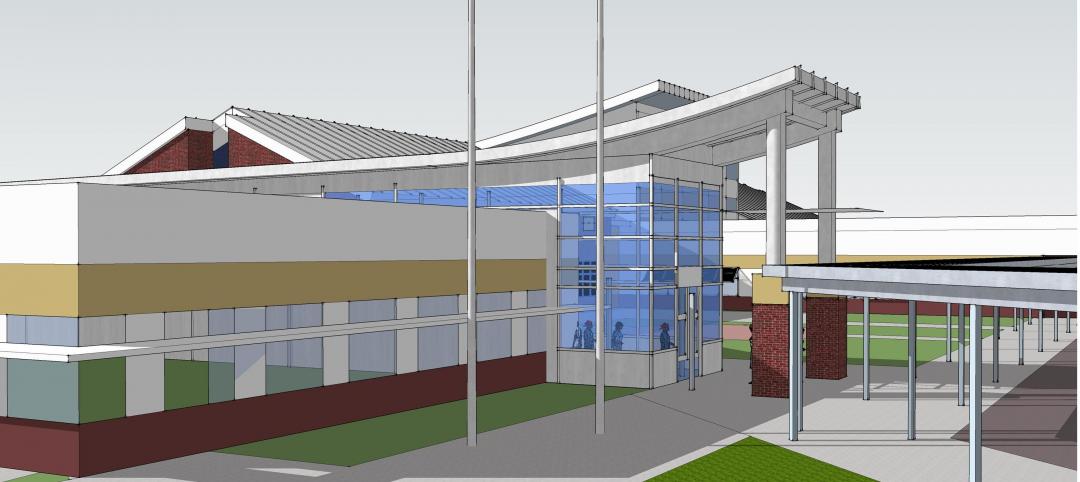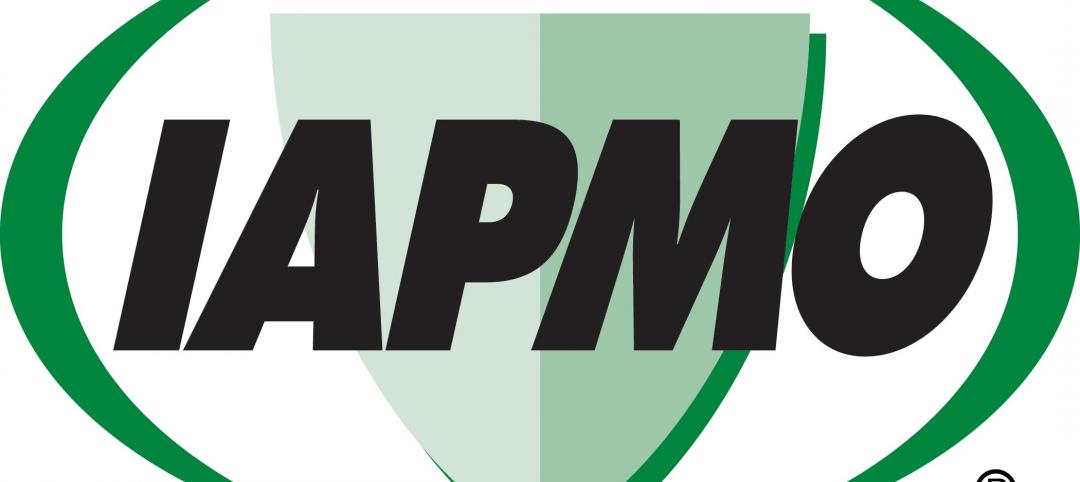 |
| Photos: Robert Canfield Photography |
“Ohlone College Newark Campus Is the Greenest College in the World!”
That bold statement was the official tagline of the festivities surrounding the August 2008 grand opening of Ohlone College's LEED Platinum Newark (Calif.) Center for Health Sciences and Technology.
The 130,000-sf, $58 million community college facility stacks up against some of the greenest college buildings in the world, with near-off-the-grid renewable energy performance and advanced stormwater management techniques. But the most intriguing fact about Ohlone's new über-green facility is that it wasn't even planned as a green building, let alone one that could achieve the USGBC's highest rating.
 |
| Two enthalpy wheels, each 16 feet in diameter, recover up to 95% of the energy from the building’s exhaust air, reducing energy use. Large circular windows provide close-up views of the wheels (below), which are situated on either side of the main lobby (top). |
 |
The original 2003 master plan by the San Francisco office of Perkins+Will envisioned a typical all-in-one community college building to replace rented classroom facilities. The facility was designed to house classroom and laboratory spaces for the college's biotechnology, health sciences, emerging technology, and environmental studies programs.
LEED certification was not a goal, noted Perkins+Will's Karen Cribbins-Kulkin, a design architect on the project. “We were keeping score ourselves, but we didn't share our point tallies with the client,” said Cribbins-Kulkin. “We called it 'sustainability by stealth.'”
Not until six months later did the Newark Center project turn a much deeper shade of green. That's when Douglas Treadway, PhD, entered the scene as Ohlone's new president and district superintendent.
 |
| The building’s horizontal ground-coil geothermal system is composed of 26 miles of pipe buried about eight feet below ground. The system minimizes the amount of energy required for heating and cooling the interior spaces by taking advantage of the stable ground temperature (about 61°F) to temper the incoming air. |
“Dr. Treadway looked at the existing master plan and decided to put the project on hold for a year so we could evaluate our direction and determine if the plan represented the very best for our students, our community, and the environment,” recalled Patrice Birkedahl, Ohlone's development director.
Treadway's vision for Ohlone's Newark campus (the school's main campus is located in Fremont, Calif., near the southeast shore of San Francisco Bay) focused on setting the benchmark for community colleges in sustainable design, particularly on energy efficiency and using the environment as a teaching tool. That led the project's Building Team—which included MEP engineer Alfa Tech Consulting Engineers, general contractor Turner Construction, and architect Perkins+Will—to collaborate on a design that would take the building more than 80% off the grid and utilize the 81-acre brownfield site and adjacent estuary and federally protected wetlands as teaching tools.
Using a computer-generated model of the building, complete with a site-specific weather profile simulator and life cycle cost calculations, Alfa Tech evaluated dozens of energy conservation and on-site energy generation techniques. In the end, two common approaches—geothermal and photovoltaics—and one not-so-common technique—enthalpy heat-recovery wheels—proved to be the perfect combination for maximizing energy efficiency on the project.
 |
| During the summer months, the Newark Center’s 713 MWh, 38,000-sf photovoltaic array provides 100% of the building’s power needs. |
To reduce the energy use in the classrooms and labs (which require large amounts of fresh air to comply with codes for occupancy and lab air exchange rates), the team specified two enthalpy wheels, each 16 feet in diameter, which can recover up to 95% of the energy from the exhaust air. The wheels also provide a 300% increase in the amount of filtered fresh air circulated through the facility, significantly improving the indoor air quality.
“We've recommended enthalpy wheels before, but the idea is usually scrapped because of the complexity of the structural and architectural challenges,” said Mike Lucas, a partner with Alfa Tech. “But on this project, the architect and the structural engineer jumped in without hesitation and made it happen.”
To accommodate the required 16 feet of uninterrupted space for each wheel, structural engineer SOHA devised an unusual solution: housing the wheels in large box structures that would eliminate the need for cross bracing or other structural elements that would interfere with the clear space requirement.
Perkins+Will jumped at the opportunity to showcase the giant wheels as a key green feature of the facility, situating the devices on either side of the main lobby, with large circular windows providing close-up views. Graphic screens next to the viewing windows provide information on the wheels' mechanics, real-time energy use, and thermal data.
Ohlone College's ground-coil geothermal system minimizes the amount of energy required for heating and cooling the interior spaces by taking advantage of the stable ground temperature (about 61°F) to temper the incoming air. Because of a subterranean aquifer on the site, the team could not drill the usual deep bore holes for the geothermal system. Instead, Alfa Tech had to design a system based on horizontal, or “slinky,” ground coils that would minimize any chance of aquifer penetration. In all, 26 miles of pipe were buried about eight feet below ground.
“There were people who seriously questioned the decision to use a system like this, because it's virtually unknown in the western U.S.,” said Turner Construction's Bill Jangraw. “But Alfa Tech's Mike Lucas placed his professional reputation on the line because he believed it was the right system for the job.”
The Newark Center's 713 MWh, 38,000-sf photovoltaic array—the largest installation in the East Bay—was paid for through a grant from Pacific Gas & Electric. The massive rooftop system contributes an average 82% of the electricity needed to operate the campus. During the summer months, the system takes the building off the grid completely.
Whether Ohlone College's Newark Center is in fact the “greenest college in the world” may be arguable, but it's clear that the college and its visionary president (who retired in 2008, shortly before the Newark Center was completed) have raised the bar for sustainable design in higher education.
“Here's a community college that could have done another crummy building, but its president came in with a vision, and it wasn't just superficial,” said Building Team Awards judge Corey Wieseman, AIA, LEED AP, principal with DLR Group, Chicago. “It's an owner that we'd all like to work for.”
Related Stories
| May 16, 2012
AEG releases 3D video of L.A.'s Farmers Field
The Los Angeles Convention Center footage depicts the new convention center hall spaces, including a new lobby above Pico Boulevard, pre-function space, and what will be the largest multi-purpose ballroom in Los Angeles.
| May 15, 2012
One World Trade Center goes to new height of sustainability
One of the biggest challenges in developing this concrete mixture was meeting the Port Authority of New York/New Jersey’s strict requirement for the replacement of cement.
| May 15, 2012
Suffolk selected for Rosenwald Elementary modernization project
The 314-student station elementary school will undergo extensive modernization.
| May 15, 2012
National Tradesmen Day set for Sept. 21
IRWIN Tools invites the nation to honor "The Real Working Hands that Build America and Keep it Running Strong".
| May 15, 2012
SAGE Electrochromics to become wholly owned subsidiary of Saint-Gobain
This deal will help SAGE expand into international markets, develop new products and complete construction of the company’s new, state-of-the-art manufacturing facility in Faribault, Minn.
| May 14, 2012
Codes harvest rainwater
IAPMO’s Green Plumbing and Mechanical Code Supplement could make rainwater harvesting systems commonplace by clearly outlining safe installation and maintenance practices.
| May 14, 2012
Plumbing research coalition to study drainline transport issue
The effort is aimed at determining if decreasing levels of water flow––caused by increasingly efficient plumbing fixtures––are sufficient to clear debris from plumbing pipes.
| May 14, 2012
SOM to break ground on supertall structure in China
The 1,740-feet (530-meter) tall tower will house offices, 300 service apartments and a 350-room, 5-star hotel beneath an arched top.
| May 14, 2012
Adrian Smith + Gordon Gill Architecture design Seoul’s Dancing Dragons
Supertall two-tower complex located in Seoul’s Yongsan International Business District.
| May 11, 2012
Chapter 10 Action Plan: 18 Recommendations for Advancing Sustainability in Reconstructed Buildings
We offer the following recommendations in the hope that they will help step up the pace of high-performance building reconstruction in the U.S. and Canada. We consulted many experts for advice, but these recommendations are solely the responsibility of the editors of Building Design+Construction. We welcome your comments. Please send them to Robert Cassidy, Editorial Director: rcassidy@sgcmail.com.















